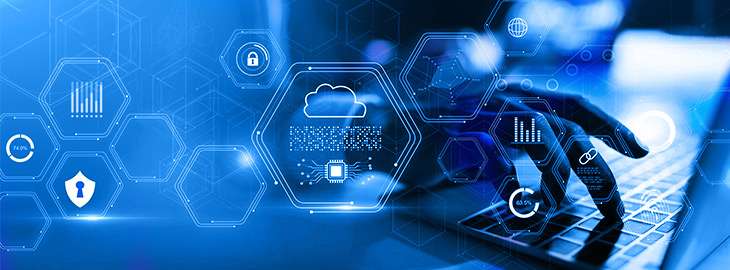
Modern organizations rely extensively on data centers and software systems to store and process valuable data. This is a boon to efficient operations, but those IT assets are also tempting targets for malicious actors. As a result, the need for robust information security controls has never been greater.
Information security controls are vital to mitigate security risks and to protect the integrity, confidentiality, and availability (also known as the CIA triad) of your IT assets. They are an essential component of effective information security management.
These controls encompass a wide range of measures designed to safeguard information systems and assure the secure handling of data. Organizations can address potential vulnerabilities by implementing appropriate controls and establishing a robust defense against malware and social engineering attacks.
This article will explore the range of information security controls a CISO might use, and how to assemble the right ones for your needs.
What Is Information Security?
“Information security” is a broad term for how companies protect their IT assets from unauthorized access, security breaches, data destruction, and other security threats. Information security includes a variety of strategies, procedures, and controls that safeguard data across your IT environment. Some key elements of information security are infrastructure security, web application security, cloud security, disaster recovery, and cryptography.
What Are Information Security Controls?
Information security controls play an indispensable role in safeguarding valuable information assets, assuring the CIA triad we mentioned above. In addition, they help to manage and mitigate security risks, including those posed by malware and other potential threats.
We can group information security controls into a few broad categories.
- Access controls restrict access to information and information systems based on user privileges, authentication mechanisms like passwords, and authorization rules.
- Encryption transforms information into an unreadable format unless you have the decryption key, assuring the information remains protected even if unauthorized access occurs. It involves the use of cryptographic algorithms and keys.
- Firewalls control the flow of incoming and outgoing network traffic using a predetermined set of rules.
- Intrusion detection and prevention systems monitor network traffic and system activities to detect and stop unauthorized access or malicious activities. They can generate alerts or take actions to block or mitigate threats.
- Malware protection controls include antivirus software, anti-malware solutions, and other technologies. They detect, prevent, and remove malicious software (malware) such as viruses, worms, and Trojans.
- Secure configuration controls harden operating systems, applications, and devices by disabling unnecessary services and removing default passwords.
- Security incident and event management solutions collect and analyze log data from various sources to identify and respond to security incidents, detect anomalies in real-time environments, and support forensic investigations.
- Secure coding practices emphasize the importance of writing secure code to minimize vulnerabilities and prevent common coding errors that attackers could exploit.
Principles of Information Security
Information security (or “infosec”) principles provide a foundation for designing, implementing, and maintaining effective security measures to protect information assets. The three objectives of information security are:
Confidentiality
Confidentiality is about assuring that sensitive data and information are only accessible to authorized individuals or entities. It involves protecting data from unauthorized disclosure, data breaches, or leaks.
Cybersecurity measures such as access controls, encryption, and secure network configurations help enforce confidentiality. Regular audits and assessments help identify vulnerabilities and ensure compliance with confidentiality requirements.
Integrity
Integrity ensures that data remains accurate, complete, and unaltered throughout its lifecycle. This principle focuses on preventing unauthorized modification, deletion, or data tampering. Network security measures, data backups, and secure storage help mitigate the risk of data corruption or unauthorized modifications.
Regular audits and risk management processes help to identify and address integrity vulnerabilities. Application security measures, such as secure coding practices and regular software updates, also contribute to maintaining data integrity.
Availability
Availability assures that information is accessible by authorized users when needed. It protects against disruptions, system failures, and unauthorized denial of service attacks.
Risk management practices, redundancy in infrastructure, backup and recovery solutions, and network security measures contribute to ensuring availability. Information technology and security teams are crucial in maintaining system availability, monitoring potential threats, and responding to incidents promptly.
Why Is Information Security Important?
Information security is crucial for organizations and individuals for five reasons.
-
Protection against unauthorized access
Information security is essential to prevent unauthorized individuals or entities from accessing sensitive or confidential information. Hackers and cybercriminals employ phishing, ransomware, or exploiting vulnerabilities in computer systems to gain unauthorized access.
Implementing robust security measures, such as strong passwords, multi-factor authentication, and other access controls helps mitigate the risk of unauthorized access.
-
Compliance with regulations and legal requirements
Many industries, such as healthcare and banking, have specific legal requirements for protecting personal data and other types of information.
Organizations must ensure that they have appropriate information security policies to comply with these regulations, such as the European Union’s General Data Protection Regulation (GDPR) or the U.S. Health Insurance Portability and Accountability Act (HIPAA).
-
Safeguarding intellectual property
Intellectual property, including trade secrets, patents, and proprietary information, is valuable for organizations. So information security is crucial in protecting intellectual property from unauthorized access or theft.
Cybercriminals may target organizations to steal intellectual property, which can result in financial losses and competitive disadvantages. Measures such as encryption, the principle of least privilege (POLP), secure networks, and restricted access helps safeguard intellectual property.
-
Preserving customer trust and loyalty
Information security is closely tied to maintaining customer trust and loyalty. Customers expect organizations to handle their sensitive information carefully and protect it from unauthorized access.
Breaches or data loss incidents can compromise personal data, resulting in financial loss, identity theft, or other harm to individuals. By prioritizing information security, organizations demonstrate their commitment to safeguarding customer information, which helps build and maintain trust and loyalty.
-
Business continuity and resilience
Information security is vital in ensuring business continuity. A breach or cyber-attack can disrupt operations, lead to data loss, and cause financial and reputational damage.
Implementing robust security measures, conducting regular backups, and establishing incident response plans can help mitigate the impact of cyber threats and ensure business operations.
Take Control of Information Security with RiskOptics
In the current relentless battle against cyber threats, organizations require a solid and advanced platform that empowers them to fortify their information security defenses effectively.
This is precisely where the RiskOptics ROAR Platform emerges as an ally. With its cutting-edge capabilities and features, ROAR provides a comprehensive suite of functionalities to enhance and reinforce information security.
Schedule a demo today and see how ROAR gives you a unified and real-time view of your security risks.




